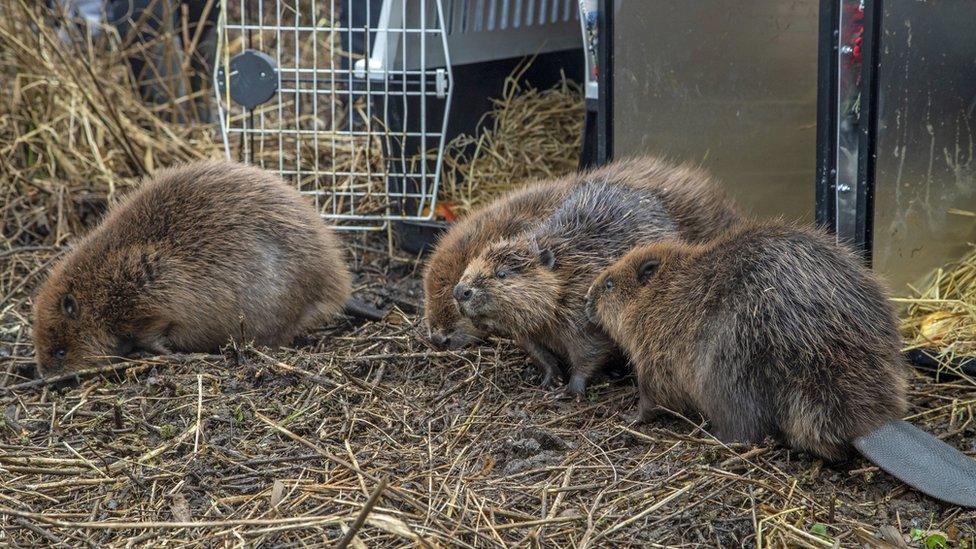Biodiversity: Beavers introduced to Loch Lomond
- Published
- comments

This is the family of beavers getting settled into their new home in Loch Lomond
A new family of beavers have been introduced to the Loch Lomond National Park.
Its part of Scotland's Beaver Strategy, which hopes to help grow the beaver population by moving them from one area to another - otherwise known as translocation.
Loch Lomond is only the third place in the country where a beaver translocation has taken place since 2009.
So what exactly is beaver translocation and how does it help them? Read on to find out!
These aren't the first beavers in Loch Lomond. Others have naturally moved into other areas of the National Park
Beavers were once brought to extinction in Scotland because people would kill them for their fur, meat and scent glands or just because they were seen as a nuisance.
But they're actually incredibly useful creatures to have around.
They're often called 'nature's engineers' because of their ability to restore woodland, create new wetlands, and improve the environment for other animals in the habitat too.
The first wild beavers to step foot in Scotland for 400 years were released in Knapdale in Argyll back in 2009 in a trial to help the government make an informed decision on the future of the species there.
Beaver babies have different names depending on how old they are.
When its born, it's called a kit.
When it turns one, it's then called a yearling.
This pair of beavers has three kits and two yearlings!
It is hoped the move will benefit other creatures, from from birds and dragonflies to fish and frogs
In 2021, the Scottish government announced its support for beaver translocation.
The beavers are safely caught in a trap in areas where they might be causing problems, and then moved to another location.
This was the moment the beavers were released into their new home!
This pair of beavers and their five babies are now making their home in Loch Lomond after being moved from an area in Tayside where beaver activity was seen as having a negative impact.
They had to go through some health checks before they were released and now both the beavers and habitat will be closely monitored to see how they settle in and begin to modify the wetland.
- Published12 May 2021
- Published11 October 2021
- Published27 September 2021
